Dear Friends, Find the list of important Reasoning Test Questions 20-20 for upcoming IBPS PO Prelims and competitive exams. We regularly provide 20 reasoning test questions daily for students. Aspirants practice these questions on a regular basis to improve your score in reasoning section. Aspirants preparing for the exams can make use of this 20-20 Reasoning Questions. Here we have started New Series of Practice Materials specially for IBPS PO Prelims 2018. Aspirants those who are preparing for the exams can use this “20-20” Reasoning Questions.
[WpProQuiz 3315]
Click “Start Quiz” to attend these Questions and view Explanation
Direction (1-5): Read the given information carefully answer the questions given below.
Eight people A, B, C, D, E, F, G and H are in the class. Each of them was born either on 10th or 20th of the month. The months are namely January, February, March and April. But they are not necessary to be in the same order.
Only two people born between E and C. B was not born on 10th of any of the months. C is younger to the person E. Only three people born between G and H. A was not born in the month which contains less than 31 days. H is younger than E. G was not born in 10th of any of the months. Only three people born between A and D. D is elder to E. F was born in the month of April.G is not younger to F.
1) Name the person who born in the month of March?
a) A, C
b) E, G
c) F, C
d) D, F
e) None of these
2) How many people born after H?
a) One
b) Two
c) Three
d) More than three
e) No one
3) Who among the following is elder to G?
a) A
b) B
c) F
d) H
e) None of these
4) C was born in which of the following date and month?
a) January 10th
b) February 20th
c) March 10th
d) April 20th
e) None of these
5) How many people were born between E and D?
a) One
b) Two
c) Three
d) Cannot be determined
e) None of these
Direction (6-10): Study the following information carefully and answer the questions given below.
FND OEW REL WQN TRX RDE
6) If all the consonant are changed to next letter of the English alphabets, then how many word will appear with two vowels?
a) One
b) Two
c) Three
d) More than three
e) None
7) If all the letters within the words are arranged in alphabetical order from left to right . Then how many words will remains same?
a) One
b) Two
c) Three
d) More than three
e) None
8) If all the words are arranged in alphabetical order from right to left then which of the following word will be third from the right end?
a) OEW
b) RDE
c) WQN
d) TRX
e) FND
9) If first and last letter of the words are interchanged, then which of the following word will be a meaning full word?
a) OEW
b) RDE
c) WQN
d) TRX
e) None
10) If all the letters within the words are arranged in reverse alphabetical order from left to right, then how many words will remains same?
a) One
b) Two
c) Three
d) More than three
e) None
Direction (11-15): Read the given information carefully answer the questions given below.
Eight people P, Q, R, S, T, U, V and W are sitting in the square table facing centre, in such a way that four people sits at the corner and four people sits at the middle of the table. But they are not necessary to be in the same order.
Only two people sit between P and S, who sits to the immediate right of V. Only one person sits between V and U. T sits third to the left of U. R sits at corner of the table. Neither Q nor W is immediate neighbour of R. Q is immediate neighbour of neither P nor W. Q is not an immediate neighbour of U and P is not immediate neighbour of R .
11) Name the person who sits third to the right of Q?
a) P
b) T
c) R
d) W
e) None of these
12) Four among the five are alike in such a way based on their arrangement, find the one who does not belongs to the group?
a) W
b) T
c) S
d) R
e) V
13) Name the person who sits third to the left of T?
a) P
b) S
c) V
d) W
e) None of these
14) How many people sits between S and U, when counted in clockwise direction of U?
a) One
b) Two
c) Three
d) More than three
e) None
15) If all the people are made to sit in alphabetical order from P in clockwise direction, then how many of them will remains in the original position?
a) One
b) Two
c) Three
d) More than four
e) None
Direction (16-18): Read the given information carefully answer the questions given below.
There are three generations in the family.B is the mother of K. F is the aunt of N, who is the brother of K. G is the mother of B. P and K are cousins. L has only one child. D is the married male in the family. L and F are not a married couple. P is only son of F.
16) How is G related to P?
a) Grand Mother
b) Grand Father
c) Sister
d) Aunt
e) Cannot be determined
17) How is L related to D?
a) Son
b) Father
c) Father-in-law
d) Mother –in-law
e) Cannot be determined
18) How is B related to P?
a) Aunt
b) Uncle
c) Cousin
d) Cannot be determined
e) None of these
Direction (19-20): Read the given information carefully answer the questions given below.
A stands 4m south of B, who stands 1m west of C. G stands 1m north of H. E stands 3m east of D. C stands 2m north of D. G stands 2m west of F. E stands 1m north of F.
19) In which direction does A stands with respect to H?
a) West
b) East
c) North
d) South
e) None of these
20) What is the shortest distance between B and H?
a) 3√5
b) 2√5
c) 4√5
d) 6√5
e) None of these
Answers:
Direction (1-5):

i). Only two people born between E and C.
ii). B was not born on 10th of any of the months.
iii). C is younger to the person E.
iv). Only three people born between G and H.
v). A was not born in the month which contains less than 31 days.
vi). H is younger than E.
vii). G was not born in 10th of any of the months.
viii). Only three people born between A and D.
ix). D is elder to E.
x). F was born in the month of April.

Case (i) –> does not follow condition (viii)
Case (iii)a –> does not follow condition (vii)
Case (iv) –> does not follow condition (iv)

Case (iii)b –> does not follow condition (ii)
1) Answer: a)
2) Answer: e)
3) Answer: b)
4) Answer: e)
5) Answer: a)
Direction (6-10):
6) Answer: c)
FND OEW REL WQN TRX RDE
GOE OEX SEM XRO USY SEE
7) Answer: e)
FND OEW REL WQN TRX RDE
DNF EOW ELR NQW RTX DER
8) Answer: b)
FND OEW REL WQN TRX RDE
WQN TRX REL RDE OEW FND
9) Answer: e)
FND OEW REL WQN TRX RDE
DNF WEO LER NQW XRT EDR
10) Answer: a)
FND OEW REL WQN TRX RDE
NFD WOE RLE WQN XTR RED
Direction (11-15):
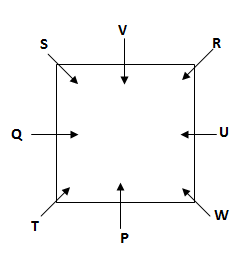
i). Only two people sit between P and S, who sits to the immediate right of V.
ii). Only one person sits between V and U.
iii). T sits third to the left of U.
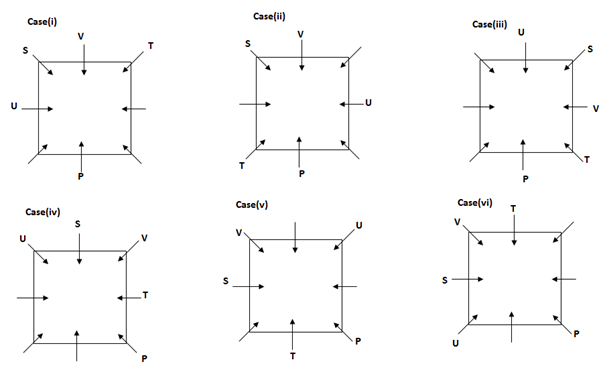
iv). R sits at corner of the table.
v). Neither Q nor W is immediate neighbour of R.
vi). Q is not an immediate neighbour of U and P is not immediate neighbour of R.
vii). Q is immediate neighbour of neither P nor W.
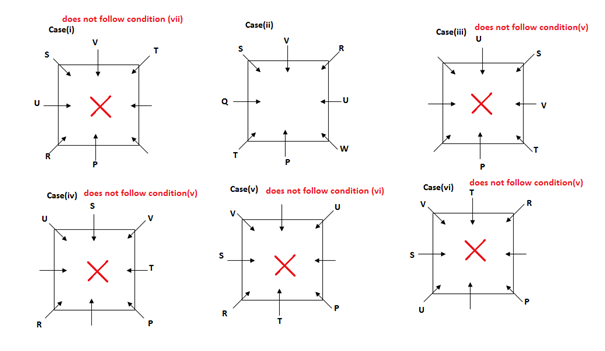
11) Answer: d)
12) Answer: e)
13) Answer: c)
14) Answer: d)
15) Answer: C)
Direction (16-18):
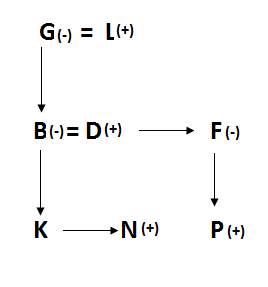
16) Answer: e)
17) Answer: c)
18) Answer: a)
Direction (19-20):
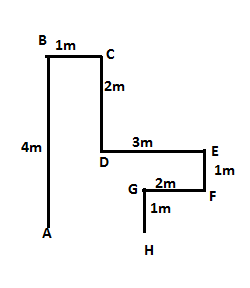
19) Answer: a)
20) Answer: b)
Daily Practice Test Schedule | Good Luck
| Topic | Daily Publishing Time |
| Daily News Papers & Editorials | 8.00 AM |
| Current Affairs Quiz | 9.00 AM |
| Quantitative Aptitude “20-20” | 11.00 AM |
| Vocabulary (Based on The Hindu) | 12.00 PM |
| General Awareness “20-20” | 1.00 PM |
| English Language “20-20” | 2.00 PM |
| Reasoning Puzzles & Seating | 4.00 PM |
| Daily Current Affairs Updates | 5.00 PM |
| Data Interpretation / Application Sums (Topic Wise) | 6.00 PM |
| Reasoning Ability “20-20” | 7.00 PM |
| English Language (New Pattern Questions) | 8.00 PM |





